Reports
Revisiting Qusayr: Uncertainties Still Abound at Suspect Underground Site in Syria
by David Albright, Sarah Burkhard, Hanah Joudi, and Frank Pabian
September 13, 2018
In light of media reports claiming that targets near the Syrian town of Al Qusayr had been destroyed in an aerial bombing attack in May 2018, the Institute chose to revisit the status of a suspect underground site near Al Qusayr once commercial satellite imagery of the area became available. In March 2018, the Institute published a satellite imagery analysis of the site and assessed its likelihood of being related to nuclear activities.1 This followed a series of claims made in a 2015 Der Spiegel report regarding the Qusayr site, including that the site could be the location of an underground nuclear reactor or uranium enrichment facility, or could contain nuclear fuel from Syria’s destroyed Al Kibar nuclear reactor.2 While the Institute could draw no conclusion, and the specific purpose of the site remains unknown, we believe that the site is, at a minimum, military-related. According to a recent media report, Qusayr “was one of the main targets of the IAF [Israeli Air Force] during [a] massive four-hour Israeli offensive against Iran in Syria in night of May 10.”3 The Times of Israel reported on May 10 that “a large Israeli bombing raid was also reported near the northwestern Syrian town of Qusayr near the Lebanese border, a known Hezbollah stronghold,” but did not list a specific site.4 The Israeli military has not commented regarding any specific targets during its strike, but the Israel Defense Forces (IDF) released an illustrative map showing the general locations of its strikes in Syria5, all of which appear to have taken place in Syria’s south-west. The map may be incomplete, but it showed no strikes near Qusayr, which is further north.
Based on commercial satellite imagery from August 16, 2018, the Institute found no evidence of an airstrike targeting the suspect Qusayr site, and the site appears as it did in images taken in November 2017 and April 2018 (see figures 1 - 6). This could mean that the site was not considered sensitive enough by Israel to warrant destruction. However, it may also have been deemed too dangerous to destroy, if nuclear material is indeed present at the site. Another, albeit unlikely, possibility is that the site was bombed and rebuilt in the past months. However, given that the site generally appears identical to the site when observed on November 2017 and April 2018 imagery, we see no reason to believe that this is the case. Moreover, the site continues to remain active with several vehicles parked in different locations around the site. Most notably, in April 2018, expansion of the limestone spoil pile in front of the easternmost underground entrance building indicates that the underground area has been recently expanded. Near the alleged wellhead, two large vehicles can be seen (figure 2). One appears to be heavy construction machinery, like a tractor, or possibly an armored military vehicle.
Figure 1. The central area of the suspect underground site as it appeared in November 2017.
Figure 2. An April 20, 2018 DigitalGlobe image shows the site less than a month before the alleged May 10 airstrike.
Figure 3. An August 16, 2018 DigitalGlobe image shows no major visible changes that would indicate an airstrike took place.
Figure 4. An overview of the Qusayr site as it appeared in November 2017.
Figure 5. An overview of the Qusayr site as of August 16, 2018.
Figure 6. A close-up of the security checkpoint.
1. See David Albright, Sarah Burkhard, Allison Lach, and Frank Pabian, “Is the facility at Qusayr, Syria an underground nuclear facility? Public Evidence remains inconclusive,” Institute for Science and International Security, March 21, 2018, http://isis-online.org/isis-reports/detail/is-the-facility-at-qusayr-syria-an-underground-nuclear-facility/ ↩
2. It is worth noting that, also in March of this year, Israel publicly admitted to the aerial bombing attack that destroyed the Al Kibar reactor and released videos showing the attack in progress: https://www.bbc.com/news/av/world-middle-east-43487760/israeli-footage-of-2007-air-strike-on-syria-reactor ↩
3. Yochanan Visser, “New evidence Iran is a huge threat to world peace,” Arutz Sheva 7, May 24, 2018, https://www.israelnationalnews.com/News/News.aspx/246442 ↩
4. Judah Ari Gross and staff, “IDF: Overnight Raids Set Back Iranian Military in Syria by ‘Many Months’,” The Times of Israel, May 10, 2018, www.timesofisrael.com/idf-overnight-raids-set-back-iranian-military-in-syria-by-many-months/ ↩
5. Israeli Defense Forces, “IDF Strikes Iranian Targets in Syria,” May 10, 2018, https://www.idf.il/en/minisites/terror-and-threats/idf-strikes-iranian-targets-in-syria/ ↩

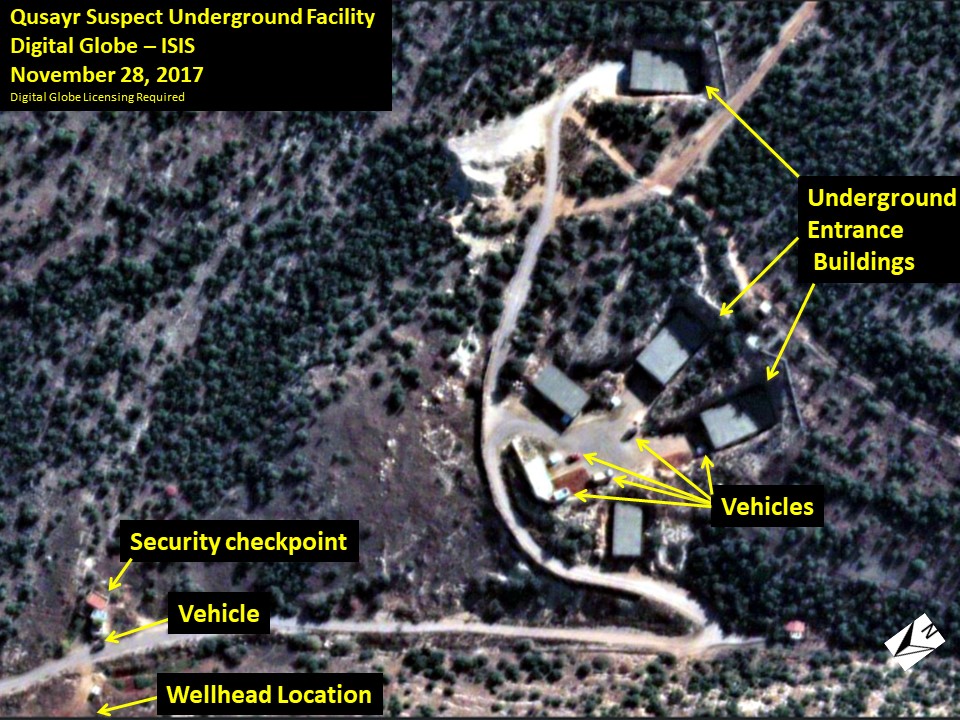
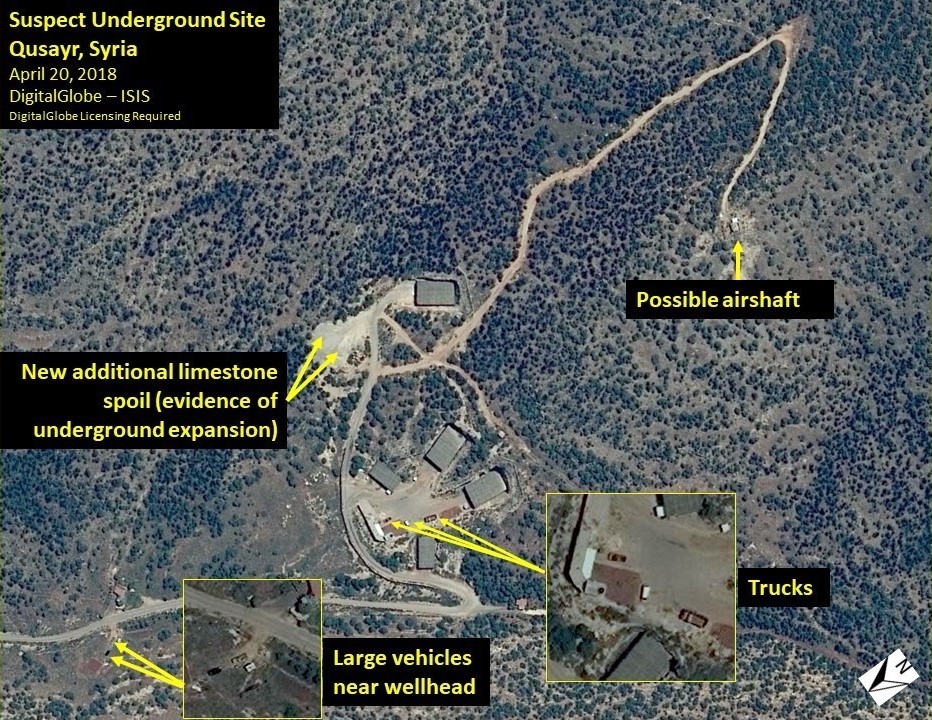
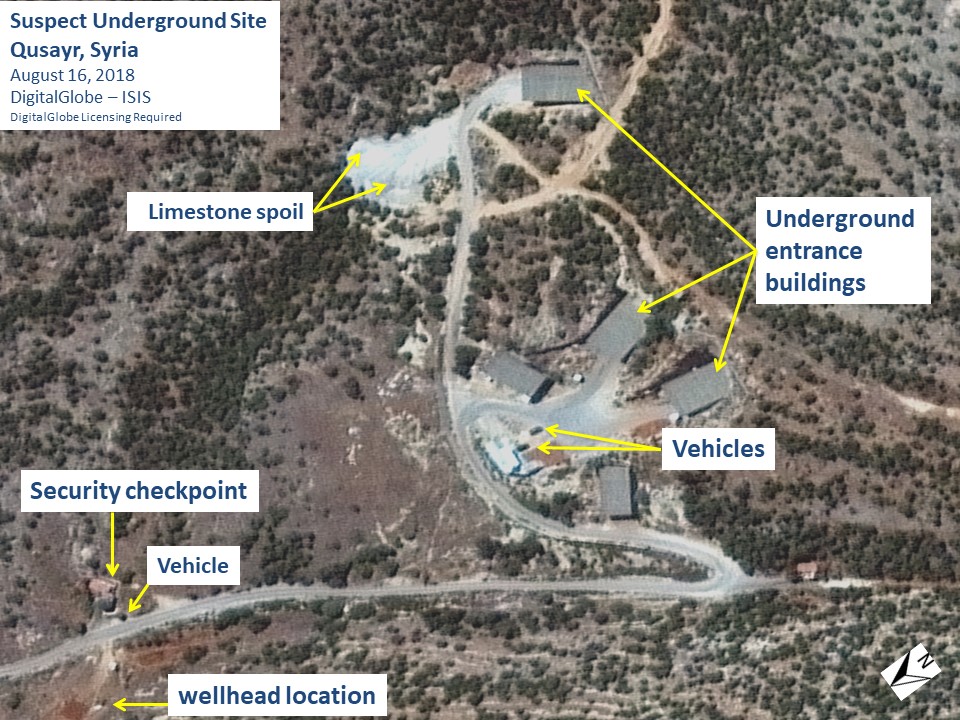
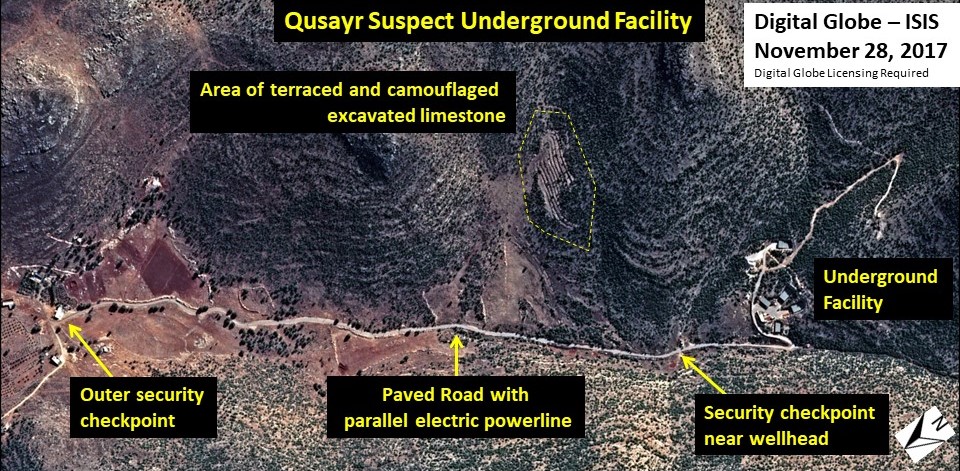

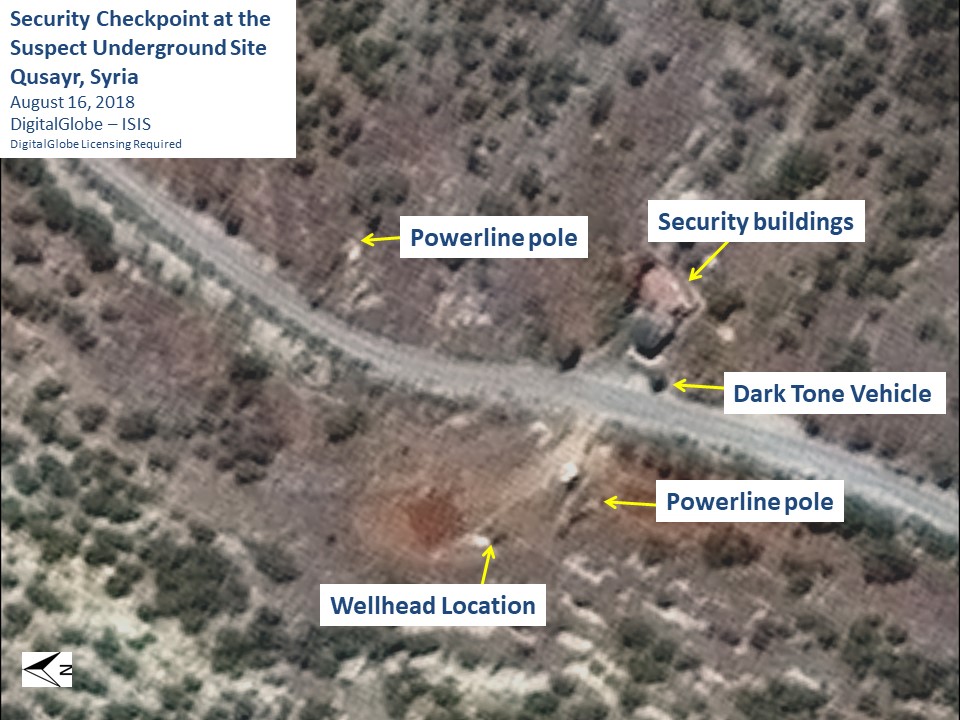
 twitter
twitter